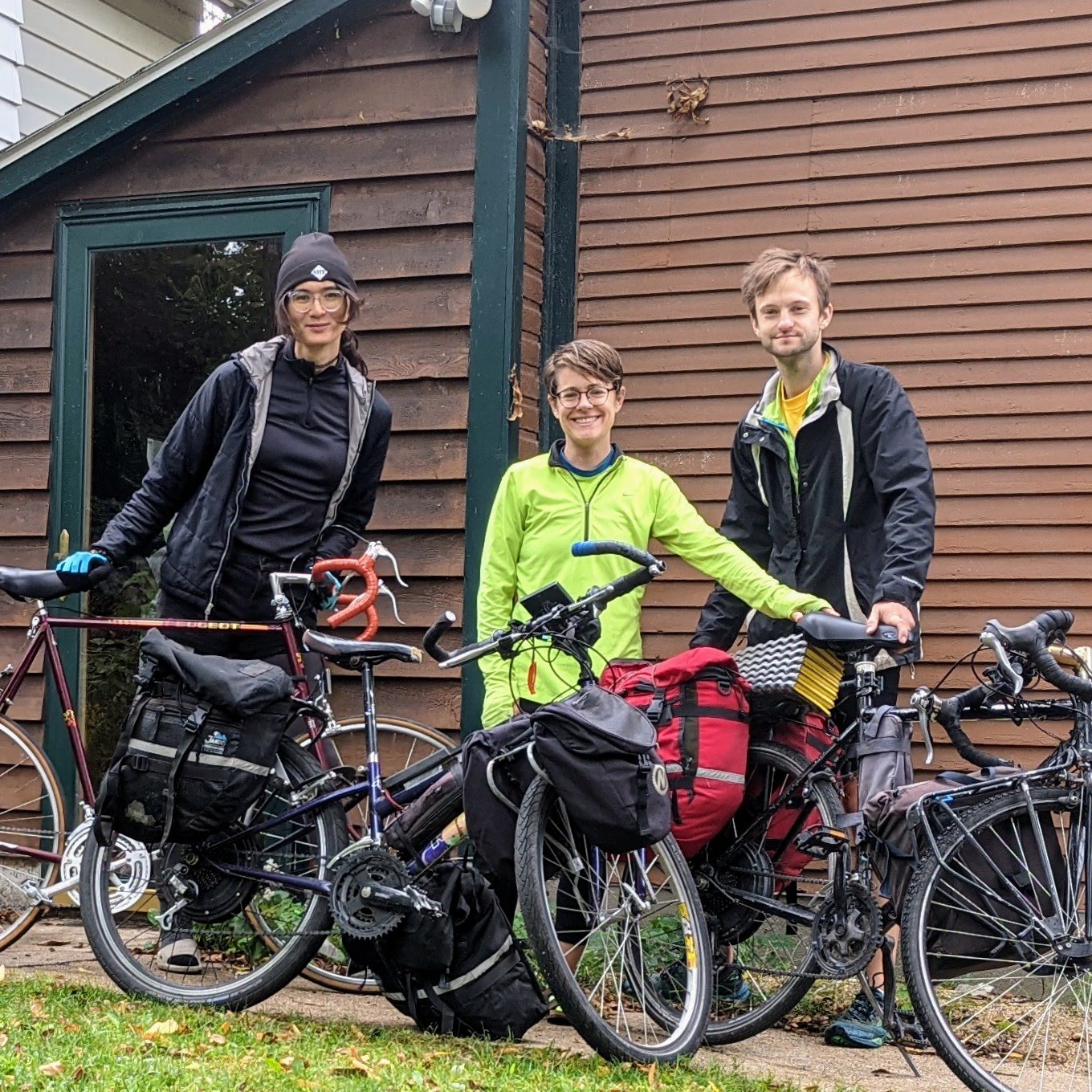Preparing for our Inaugural Tour

In the summer of 2021, we'll be starting to travel in a way that connects outdoor adventure with a vision for a better world. To start on our journey, we've been building an interesting mode of travel and testing it out. Read on to find out more.
Building the solar wagon - a tail of trial and error
For our trip, we didn’t start out with the intention of a long distance bike trip in the same way most cycle tourers might. Our dream had actually been to combine #vanlife with a bunch of amazing backpacking adventures. But the more we thought about this, the more it just felt wrong to go driving all over the country knowing the environmental damage that driving a big carbon emitting vehicle would cause. We were longing for a better way to carry all the gear we needed for backcountry adventure, without relying on fossil fuels.
So the idea for solar powered bicycles evolved naturally from this challenge. We started by thinking about just using standard (non-electric) bikes, but we realized it just wouldn’t be possible to carry the food and gear we needed for the backpacking trips we wanted to do. We next contemplated ebikes, but quickly realized that it would be impossible to keep them charged on the distances we were going between towns. And nothing is worse than riding a heavy ebike after it’s out of power. So this was when we came up with the solar charging ebike idea. Fortunately, many many people have already worked on these ideas for several years so we had lots of great models to start from.
Then, Then we set to work building our tandem electric bike and an accompanying trailer. For this project, Will wrote a detailed account on his personal blog for those interested to learn more.
Claire gives us a walk-through of the initial prototype in this video.
With the tandem bike and double trailer, the rig ended up being extremely long! We knew from the beginning that our trip would be full of trial-and-error, and that we would need to work out redesigns along the way. But we couldn’t have imagined how much would change.
A test trip between Point Arena and Mendocino, California
After a few tests around the block, we decided to test this crazy machine on a 3 night backpacking trip at a remote hot spring about 50 miles away.
After a ride along the bluffs of the Northern California coast from Mendocino to Point Arena, complete with rolling hills and ocean spray, we turned inland at Point Arena to reach the trailhead at the Garcia River.
We had found directions for a hike along the Garcia River to the elusive hot springs. The hike up was a long but beautiful 9 miles and filled with more than 50 refreshing (aka very cold) river crossings. Once we got close to the supposed springs, we thought we might not make it due to a very large mud pit abutting cliffs and a very cold deep section of the river. At our whit’s end, we threw some large branches across the mud for a very shaky balance beam bridge and hoped we didn’t fall in while crossing (we expected Claire to bite the dust for sure). After making it over we were still confronted with a swim and a rock scramble to finally reach the relaxing end. A hot spring never felt so good!
@trailcooperative Trip to the Point Arena Hot Springs. Refueling at the Arena Market Co-op. ##backpacking ##cooperative ##hotsprings ##vanlife
♬ original sound - SPTC
We stayed close to springs overnight and returned to the trailhead the next day. We stayed overnight in the forest near the trailhead, and rode back down into Point Arena to restock on supplies for the ride back and grab breakfast and coffee at the Arena Market and Cafe Co-op.
We rode the same path in reverse back to our house near the charming little village of Mendocino. Mendocino is a really beautiful place and so full of history—especially history about cooperatives. Living nearby, we learned so much about the solidarity economy from neighbors as well as the Grassroots Institute
Mendocino has a number of worker co-ops including the Artists’ Co-op Gallery and Corners of the Mouth Natural Food Store. During our time in this area, we interviewed the worker and artist-owners of these cooperatives for our documentary series.
Rebuilding the tandem with lighter materials
Our first trip taught us that our equipment was very, very heavy. Before leaving, we undertook our first major rebuild of switching to lightweight solar panels to try to alleviate some of our weight burden.
We were able to find some relatively inexpensive but extremely lightweight solar panels from ebay. Each panel was 130 Watts, and they weighed a mere 4 lbs a piece. This was in contrast to our original hand-me-down panels which were each more than 20 lbs. This rebuild also made it so that we could afford to use less material in our mounting device, saving even more weight from the final design. An added bonus was that for about the same size, we were also getting more than 40% more power from the new panels, which would greatly reduce our recharge time.
All-in-all, this turned out to be only the first redesign of many to come, but by this point time was running out to begin our tour…


